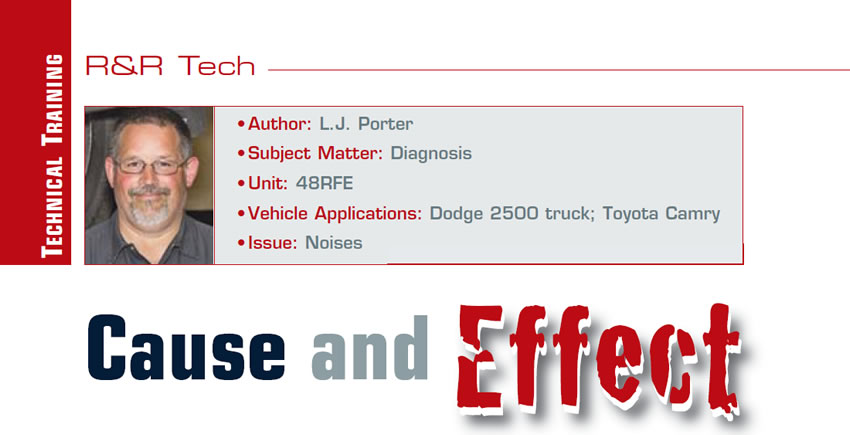Recent Diagnostic Trends
Sales of 4L60E units that incorporate the input speed sensor (ISS) are on the rise. Because of the increased sales, we are seeing more claims and problems with the sensors used in these units. Codes P0716 (ISS performance) and P0717 (ISS circuit low voltage) seem to be the key troublemakers.
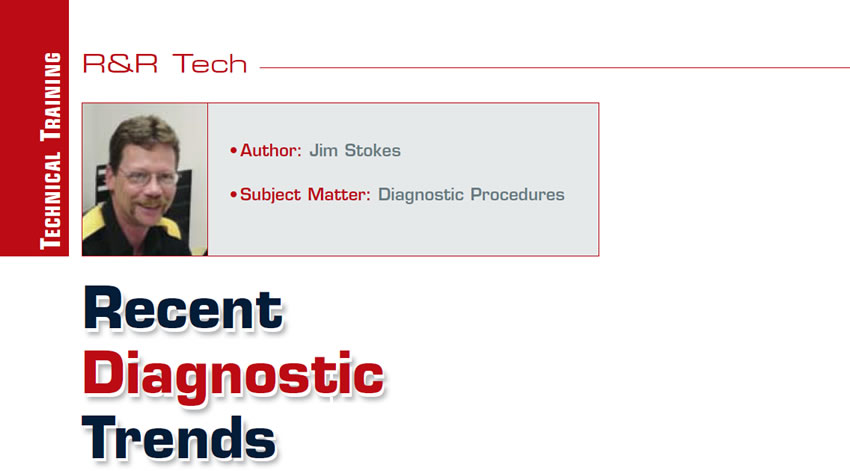
Outta Sight!
We’ve all had to chase intermittent vehicle issues. What makes them so challenging is that you can’t fix what you can’t see. Sure enough, it always seems that the concern disappears when you’re trying to diagnose the issue in your bay.
This story is a similar case. We were diagnosing a 2002 Dodge Grand Caravan with a 604 transmission and 3.8L engine. Six months prior, the vehicle owner contacted us and said that the transmission would not shift and was starting off in 2nd gear. By the symptom description, the unit was likely going into failsafe mode. We scheduled an appointment, but the customer was a no-show.
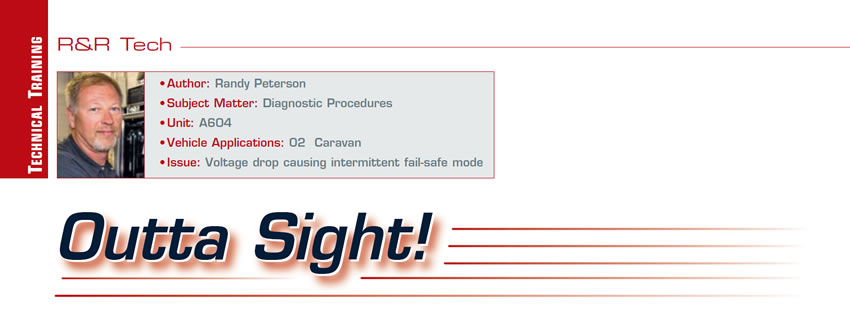
CAN U Communicate?
By now, most of us have had to deal with a CAN (Controller Area Network) communication “U” series code at one time or another. Most of the time, diagnosing one these codes is fairly straightforward, given all of the articles and technical publications that have been written regarding these problematic codes. In most cases, it just comes down to identifying the module that isn’t communicating with the other modules on the CAN bus line for whatever reason. Generally, it’s some type of lost voltage or a poor ground in the circuit wiring to the module in question. So, what happens when all your diagnostic tests and checks take you down a dead-end road, and the actual problem ends up being a component that shouldn’t have had anything to do with a communication error code? I’m sure there may be a few engine drivability techs out there who have run into the situation that I’m about to cover, but it was a first for me.
A Frustrating Problem or a Normal Condition?
We recently had a customer come into our shop with a 2005 Jeep Grand Cherokee. He was very frustrated because he had taken his Jeep to a couple of repair shops as well as a local dealership but they hadn’t been able to correct the problem. The Jeep had a binding condition (described as “grinding” by the customer) in tight turns when it was cold.
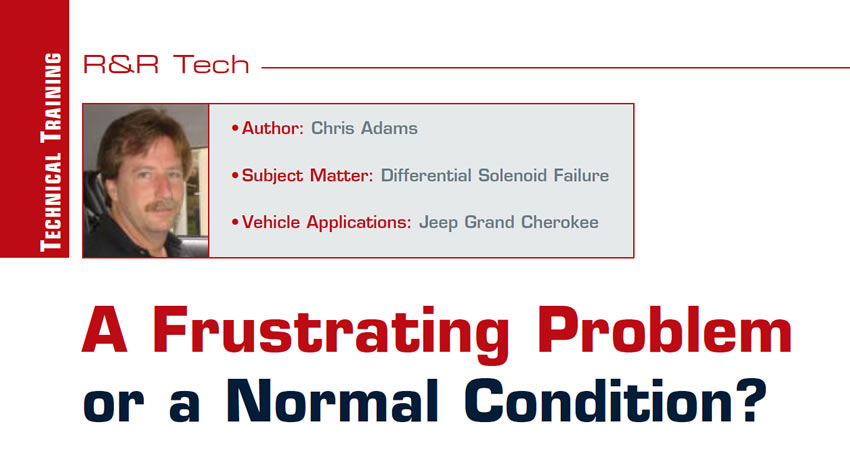
Diagnostic Protocol Saves Time, Money
Anyone who has been in the automotive repair business long enough to remember when repair bulletins were accessible only by either fax or snail-mail can appreciate the ease of access that electronic communication has afforded us in the modern repair environment. More amazing still, is the fact that there are still techs in the industry that fail to seek and use this information to save themselves (and their customers) time and trouble when attempting to diagnose a repair.
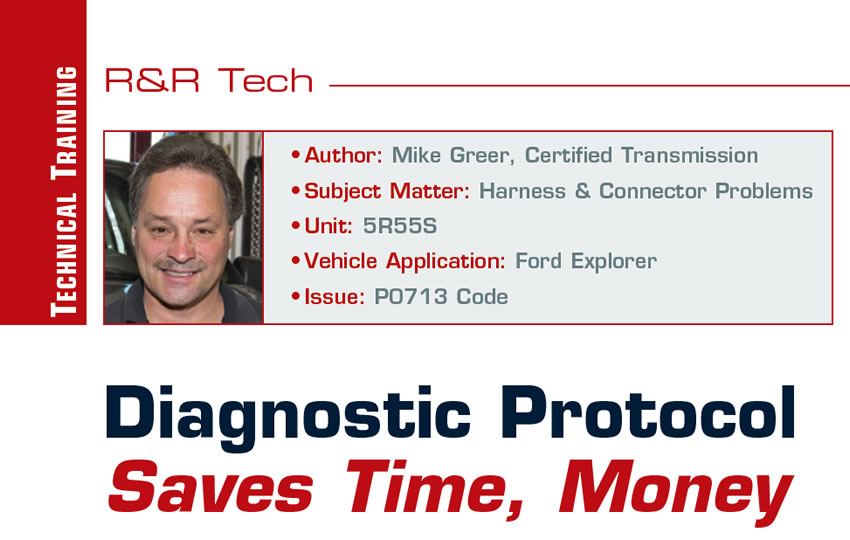
Premature Overdrive
It seems that we have run into several different vehicles in the recent past that have had stacked shifts, and shifted into overdrive by 20 mph. While the symptoms were the same, the diagnoses and repairs were very different. Here is what we found to be the problem on each one.
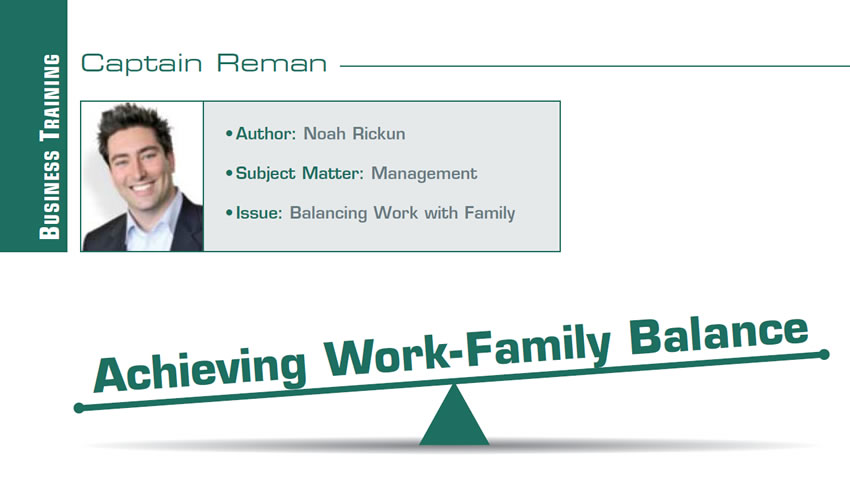
Multiple Issues Demonstrate Need for Thorough Diagnosis
Our story begins with a 1995 Chevrolet K1500 with a 6.5-liter diesel and a 4L80 E transmission that was brought into our shop by one of our wholesale customers. The customer had replaced the transmission in this vehicle with one of our remanufactured units. After the installation, the customer said the check engine light came on and the vehicle was setting multiple transmission codes, and that when the truck was going around a left-hand turn the transmission would neutralize.

The Importance of Checking Grounds
The 5R110W transmission that is common to the 2003-2009 Ford Super Duty trucks and vans is a very reliable and straightforward transmission when it comes to diagnosis and repair. The subject of this article is a 2007 F-350 equipped with the 6.0L diesel engine and the 5R110W transmission.

Check Tire Sizes on AWD/4WD Vehicles
We have all had our ‘feel good’ moments about maximizing our customer relationships by going above and beyond when we diagnose a customer vehicle with the goal of saving them money during their visit to our shop. Minimizing their expense, getting them back on the road in a timely manner and providing a pleasant service experience influence them to sing our praises to friends and thus increase our sales revenues from “word-of-mouth” advertising. Sometimes cost-cutting measures can end up costing more in the end.

Analyzing Failure Patterns
We all know that the 4L80-E is a very common transmission, and in many applications that it is used in it sees moderate to heavy-duty usage. Because of its popularity, we see many of them in the shop. As with anything that comes into your shop on a regular basis, you can see certain failure patterns emerge that make for a good case-study. This article focuses on one such concern that grew into solving other issues as well: engine stalling upon reverse engagement, occurring immediately or shortly after installation of a remanufactured transmission.
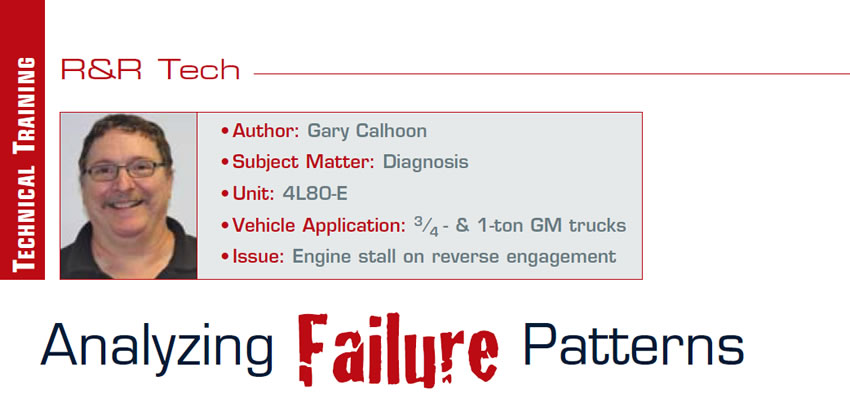
Basic Test Solves Intermittent Issue
Those of us who worked on vehicles that predated mandated catalytic converters and gas shortages can remember a wonderful time when even the most-complex electrical systems could be diagnosed with a simple test light. Computers were just starting to transform from behemoths that took up entire rooms in buildings to something that could actually fit on your desk. And there were only four wires connected to the transmission. Yes, youngsters, I said four. Those were the days.
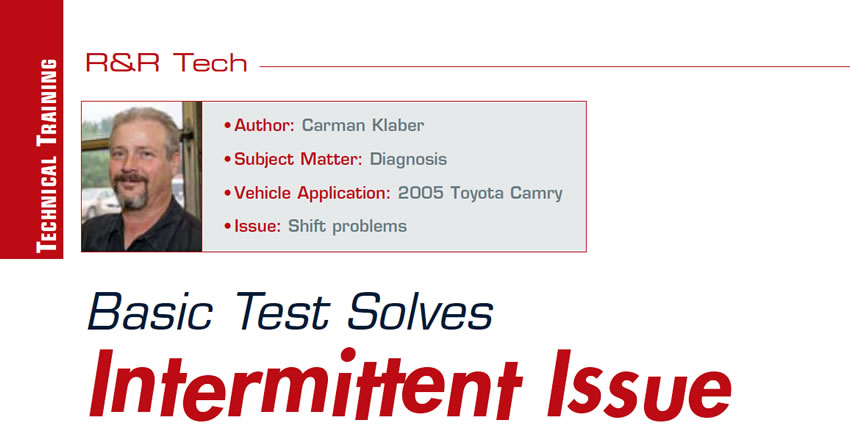
Cause and Effect
A customer brought in his 1994 Toyota Camry, concerned that his brakes were hanging up as he was stopping. When I road-tested the vehicle I confirmed that there was a strange dragging feeling upon light brake application. I also noticed that when the brake pedal was applied, the “R” lamp in the PRNDL indicator illuminated even though the selector was in Drive. I also noted that the ‘tail lamp out’ warning indicator came on at the same time. The first obvious check was to take a look at the taillights themselves. I have learned over the years that you never ignore the signs right in front of you, even if you think they might be completely unrelated.
